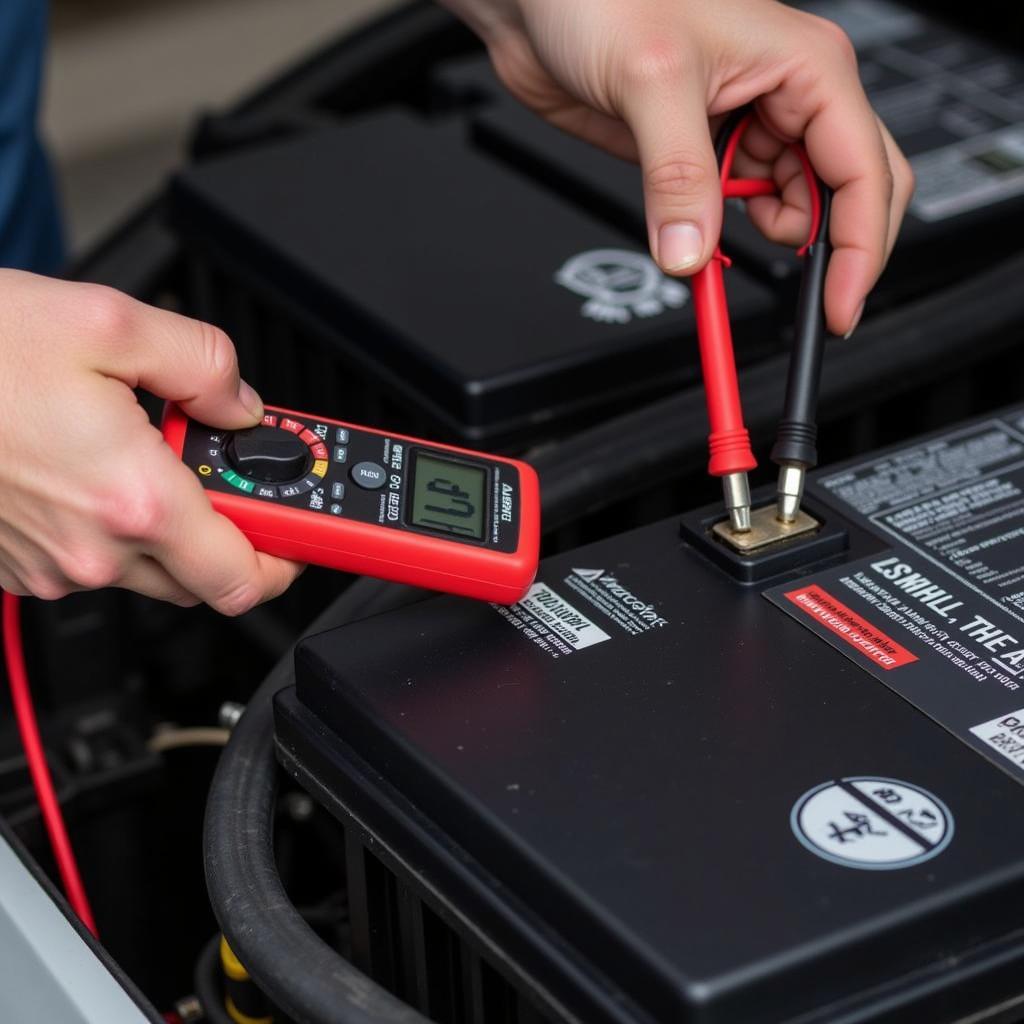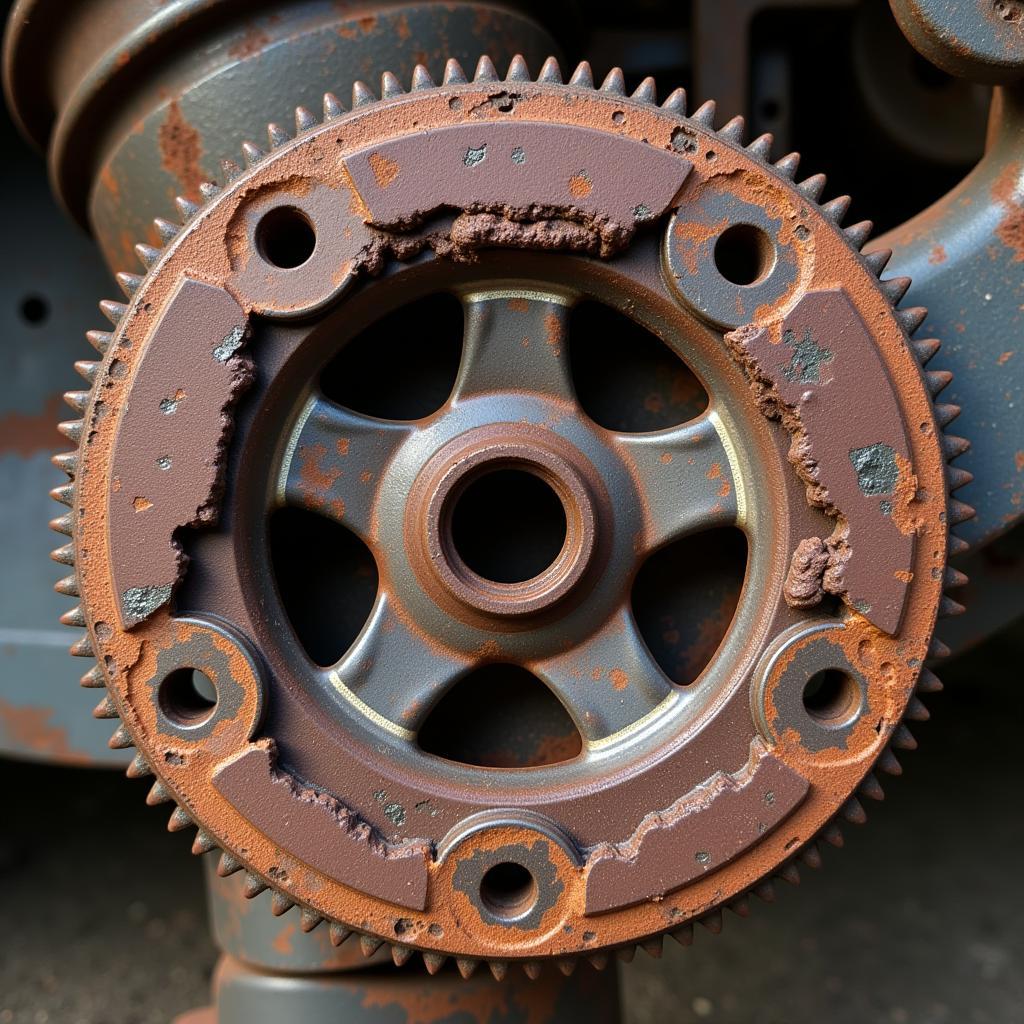That dreaded clicking sound, followed by the disheartening silence of a non-starting engine, is a frustrating experience every car owner dreads. If your car is clicking but won’t start, it can signal several potential issues, ranging from a simple flat battery to more complex electrical or mechanical problems. This comprehensive guide provides a step-by-step approach to diagnose and potentially resolve the issue, empowering you to take control of the situation.
Identifying the Clicking Sound: Where’s It Coming From?
The first step in diagnosing a clicking car is pinpointing the source of the clicking noise. Is it coming from under the hood, from the dashboard, or somewhere else entirely? Different locations indicate different problems. Clicking from the starter motor often signifies a weak battery or a faulty starter. Clicking from the dashboard, however, may point towards a problem with the ignition system or a blown fuse. Paying close attention to the location of the sound is crucial for accurate diagnosis. What kind of clicking noise is it? Is it a rapid clicking, a slow clicking, or a single, loud click?
Is it the Starter Motor Clicking?
If the clicking seems to be emanating from under the hood, near the engine, it’s most likely the starter motor. This is the most common cause of a car clicking but not starting. A single click might indicate a faulty starter solenoid, the component responsible for engaging the starter motor with the engine’s flywheel. Rapid clicking, on the other hand, usually points to a low battery charge, unable to provide enough power to crank the engine.
If you suspect the issue is a flat battery, see our guide on Land Rover battery problems. This can be particularly helpful if you own a Land Rover.
Testing Your Car Battery: The First Step
A weak or dead battery is the most frequent culprit when your car is clicking but won’t start. You can easily test your battery using a multimeter. Connect the multimeter probes to the positive and negative terminals of the battery and check the voltage reading. A fully charged battery should read around 12.6 volts. A reading significantly lower than this indicates a low charge. If you don’t have a multimeter, you can try jump-starting your car. If your battery won’t jump, the battery may be completely dead and require replacement.
How to Jump Start Your Car Safely
Connect the red jumper cable to the positive terminal of your dead battery. Then connect the other end of the red cable to the positive terminal of the good battery. Next, connect the black cable to the negative terminal of the good battery and the other end to a metal part of your car’s engine block, away from the battery. Once connected, try starting your car. If it starts, your battery was likely the problem. However, if you encounter any issues jumping your battery, refer to our guide. Especially for owners of specific car models, resources like our guide on Discovery 4 battery problems can offer tailored advice.
 Checking Car Battery Voltage with Multimeter
Checking Car Battery Voltage with Multimeter
Beyond the Battery: Other Potential Culprits
While a dead battery is the most common cause, other issues can also result in a clicking car. These include a faulty starter motor, a bad alternator, corroded battery terminals, a faulty ignition switch, or even a damaged wiring harness. A faulty starter will require replacement. A bad alternator prevents the battery from charging while driving, eventually leading to a dead battery. Corroded battery terminals impede the flow of electricity and can be cleaned with a wire brush and baking soda solution. A faulty ignition switch or damaged wiring harness requires more advanced diagnostic tools and likely professional repair.
“A clicking sound when trying to start your car is almost always an electrical issue, even if it seems like a mechanical problem. Thoroughly checking your electrical system is crucial before considering more complex mechanical repairs.” – John Smith, Automotive Electrical Engineer
When to Seek Professional Help: Diagnosing Complex Issues
If you’ve checked the battery and it’s not the issue, or if you suspect a more complex problem such as a faulty starter, alternator, ignition switch, or wiring harness, it’s best to seek professional help. A qualified automotive technician can use advanced diagnostic tools to pinpoint the exact cause of the problem and perform the necessary repairs. For example, they can test the starter motor and solenoid directly, check the alternator’s output, and inspect the wiring harness for damage. You might also consider checking our guide on Land Rover key fob replacement if you think your key fob might be causing issues, specifically with Land Rover vehicles. Similarly, our guide on Discovery 3 brake pad warning light reset can be helpful if you’re dealing with brake warning lights on your Discovery 3.
Conclusion: Don’t Let a Clicking Car Stop You
A car clicking but won’t start can be a daunting experience. However, by following this guide, you can identify the potential causes and take the necessary steps to resolve the issue. Remember to always prioritize safety when working on your car, and don’t hesitate to seek professional help when needed. Addressing the problem promptly can prevent further damage and get you back on the road quickly. If your car is clicking but won’t start, remember to check the battery first, then consider other electrical components before resorting to more complex mechanical diagnoses.
FAQ
-
What is the most common reason a car clicks but won’t start? A dead or weak battery.
-
How can I test my car battery? Use a multimeter to check the voltage.
-
What should the voltage of a fully charged car battery be? Around 12.6 volts.
-
What does a single click from the starter indicate? A possible faulty starter solenoid.
-
What does rapid clicking from the starter indicate? A likely low battery charge.
-
What if the battery isn’t the problem? Check the starter, alternator, terminals, and wiring, or seek professional help.
-
Is it safe to jump start my car? Yes, if done correctly. Follow the instructions carefully.

